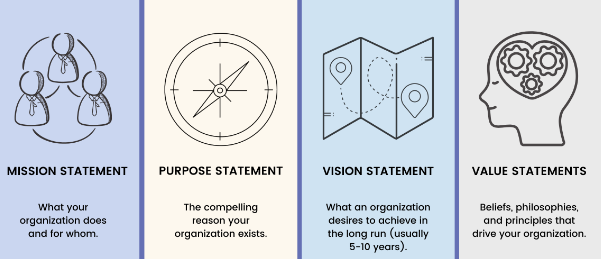If the team doesn't have a "mission statement"...
Rescue teams are tasked with a daunting mission – they are tasked to save lives in dangerous and unpredictable situations. This means that they must be highly effective and well-organized, as any mistakes or missteps can result in catastrophic consequences.
A mission statement is crucial for any rescue team, as it provides leadership with clarity on the goals of the mission, allows personnel to have access to the same information at all times, and helps ensure cost efficiency when resources are scarce.
- Purpose
- Objectives
- Values
Creating a mission statement for any organization is paramount to its success. It is the leadership’s responsibility to ensure that the mission statement accurately reflects their economic priorities and serves as a strong foundation for guiding decision-making. Without it, teams may drift away from the ultimate goal without proper direction or oversight, resulting in wasted resources and time.
A mission statement should define the purpose and objectives of a rescue team, and should focus on what the organization wants to accomplish. It should serve as a unifying factor between leadership and followers, ensuring that everyone involved in operations understands why they are doing what they’re doing. By making sure that all relevant personnel have access to training materials for each operation type, leadership can provide their team with much needed knowledge about how to best handle hazardous scenarios when lives are at stake. It also ensures that everyone has the same information available at all times during missions which reduces confusion and improves operational effectiveness.
Including economic realities into a mission statement is equally important for any rescue team. Focusing on cost efficiency while still meeting objectives will help identify areas where money may be wasted due to inefficient use of resources or ineffective strategies so corrections can be made swiftly without sacrificing mission goals. Leaders must also remember that creating an effective mission statement not only involves setting objectives but also making sure those objectives reflect the values of those expected to carry out operations on behalf of the organization. Doing this will lead to better morale from leadership ranks and better results overall from successful outcomes during missions.
 Having clear vision of a mission statement is essential for any rescue team because it keeps them focused on their core objective – “saving lives and how they go about it”- while also helping them optimize operations for maximum efficiency under pressure-filled environments like natural disasters or civil unrest scenarios requiring immediate attention from experienced professionals who understand how best respond given predetermined constraints set forth by leadership before deployment begins.
Having clear vision of a mission statement is essential for any rescue team because it keeps them focused on their core objective – “saving lives and how they go about it”- while also helping them optimize operations for maximum efficiency under pressure-filled environments like natural disasters or civil unrest scenarios requiring immediate attention from experienced professionals who understand how best respond given predetermined constraints set forth by leadership before deployment begins.
Ultimately, having an effective mission statement helps minimize risk associated with these types of high stakes operations by providing leadership with guidance when facing difficult decisions under tight timelines or resource restrictions imposed by challenging circumstances such as those mentioned above which often require quick thinking in order to remain successful in completing missions without endangering human life unnecessarily along the way.
Having economic realities woven into a mission statement is also essential for any rescue team because it keeps them focused on cost efficiency while still allowing them to meet their goals. This makes it easier to identify areas where money is being wasted due to inefficient use of resources or ineffective strategies and make corrections accordingly while still meeting their goals efficiently—which can be crucial when lives are on the line.
Peace on your Days
Lance









